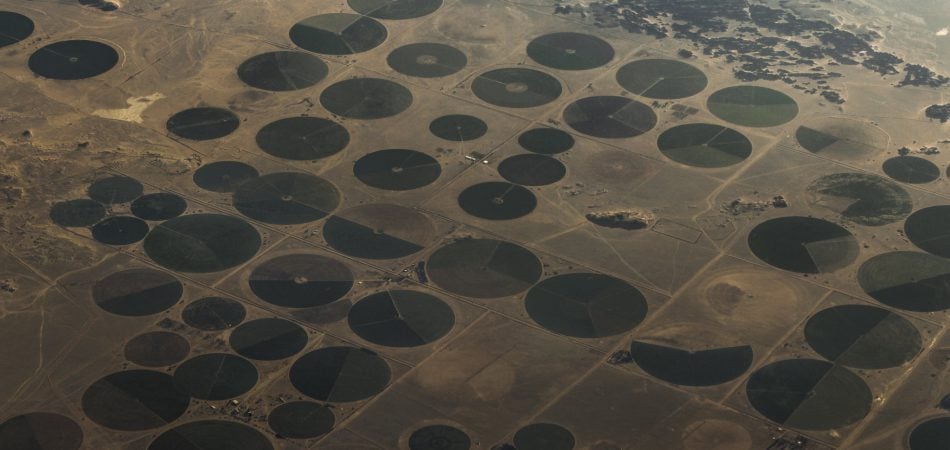
The total water demands in KSA increased from 19.2 BCM to 24.6 BCM between 2011 and 2015.[1] The average annual growth of water demand is 7%. As shown in Figure 1, the water demand was 17.4 BCM in 2019, of which 20% was for urban (domestic and commercial) purposes, 8% for industrial purposes and 72% for agricultural purposes.[2] A comparison between the sectoral water demands over the period 2010-2019 was conducted, as shown in Figure 2.
Figure 1: Water sectoral demands in KSA.[3]
Urban water use
Urban water use in KSA in 2019 was 3,493 MCM/yr, of which 2,897.5 MCM/yr was consumed by the domestic sector and 595.4 MCM/yr by the commercial sector. The main sources of urban water are desalination and groundwater.[5]
As shown in Figure 3, 35% (1,237 MCM) of the total urban demand in 2019 was obtained from groundwater abstraction and 65% (2,256 MCM) from desalination.[6]
Figure 3: Urban water use in KSA between 2007 and 2019.[7]
Agricultural water use
The agricultural sector accounts for nearly 72% of the total water use in KSA but makes up only 2.2% of GDP. Of all the water used in agriculture, 90% is supplied by groundwater aquifers.[8]
The total arable land is estimated at 36,470 km2, which makes up about 1.63% of the total area of the country. Modern irrigation systems, such as drip or sprinkler irrigation, cover about 67.6% of the total irrigated area, while the remaining 34.4% is irrigated using traditional surface irrigation systems.
The number of artesian wells extracting water from deep groundwater aquifers is highest in Riyadh at 21,301, followed by the Eastern region, Qassim, Medina and Hail, which is an indicator of the growing depletion of non-renewable groundwater resources in these regions. In regions like Jawf, Tabuk, Eastern and Qassim, more than 95% of irrigation relies on deep non-renewable groundwater as the main water source. Almost all agricultural areas are dependent on the pumping of deep groundwater for irrigation, which is challenging and costly.[9]
[1] Ministry of Environment, Water and Agriculture, 2018. National Water Strategy 2030.
[2] Ministry of Environment, Water and Agriculture, 2019. Statistical book: Year 2019 (1440-1441).
[3] Ibid.
[4] Ibid.
[5] Ibid.
[6] Ibid.
[7] Ibid.
[8] Ghanim, AA, 2019. Water resources crisis in Saudi Arabia, challenges and possible management options: An analytic review. World Academy of Science, Engineering and Technology International Journal of Environmental and Ecological Engineering 13(2).
[9] Ibid.

